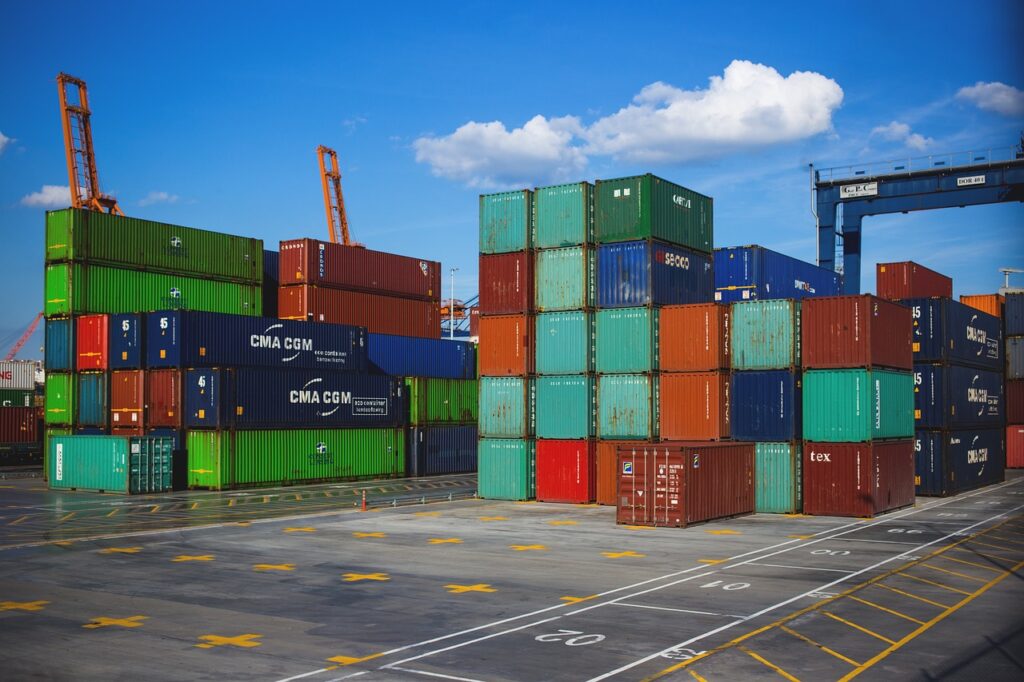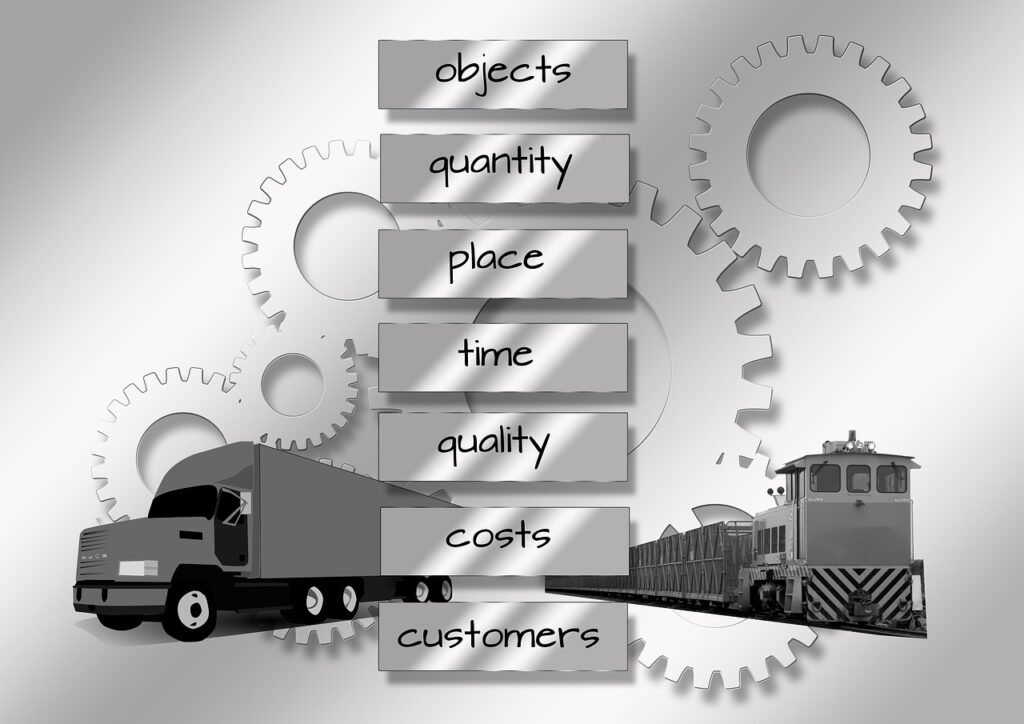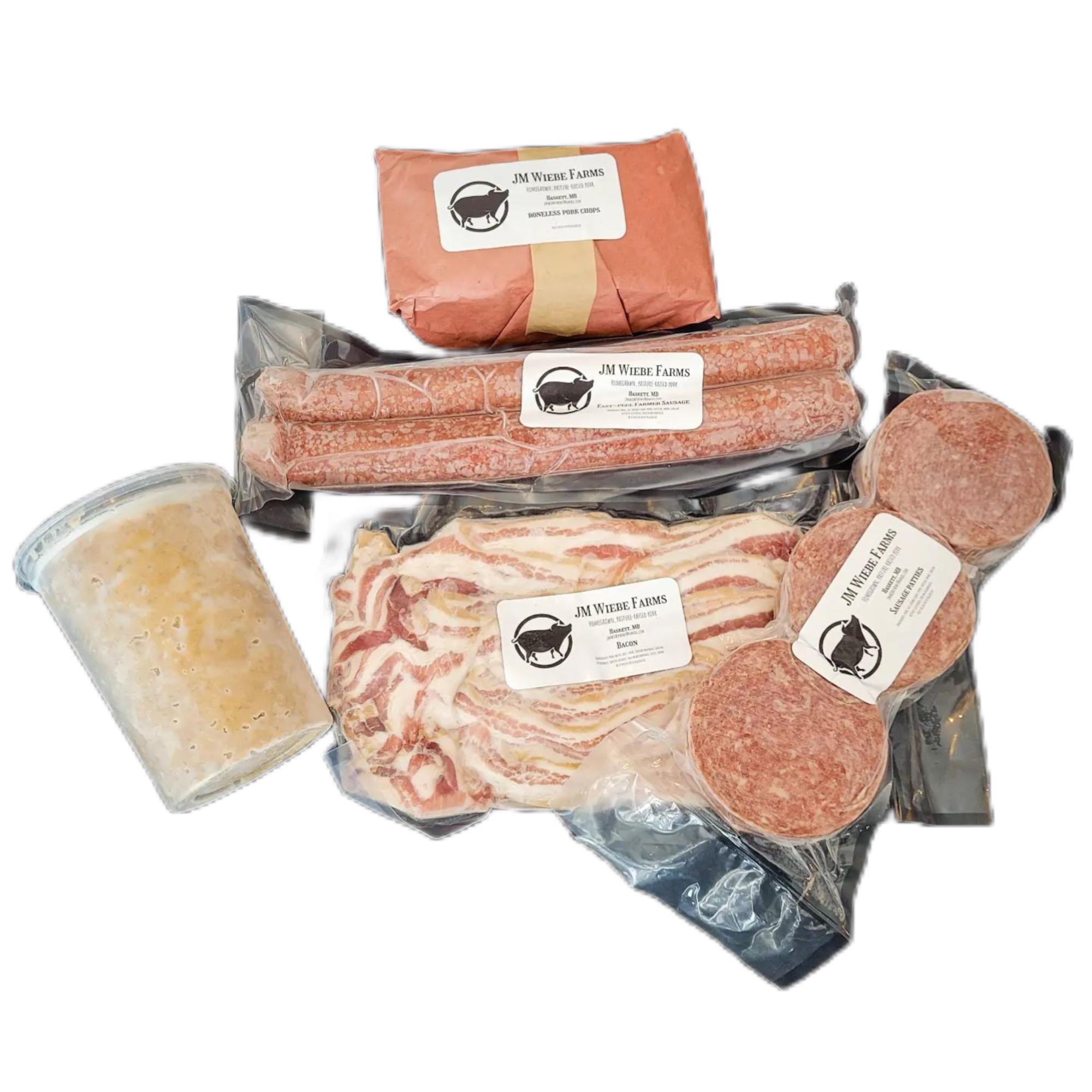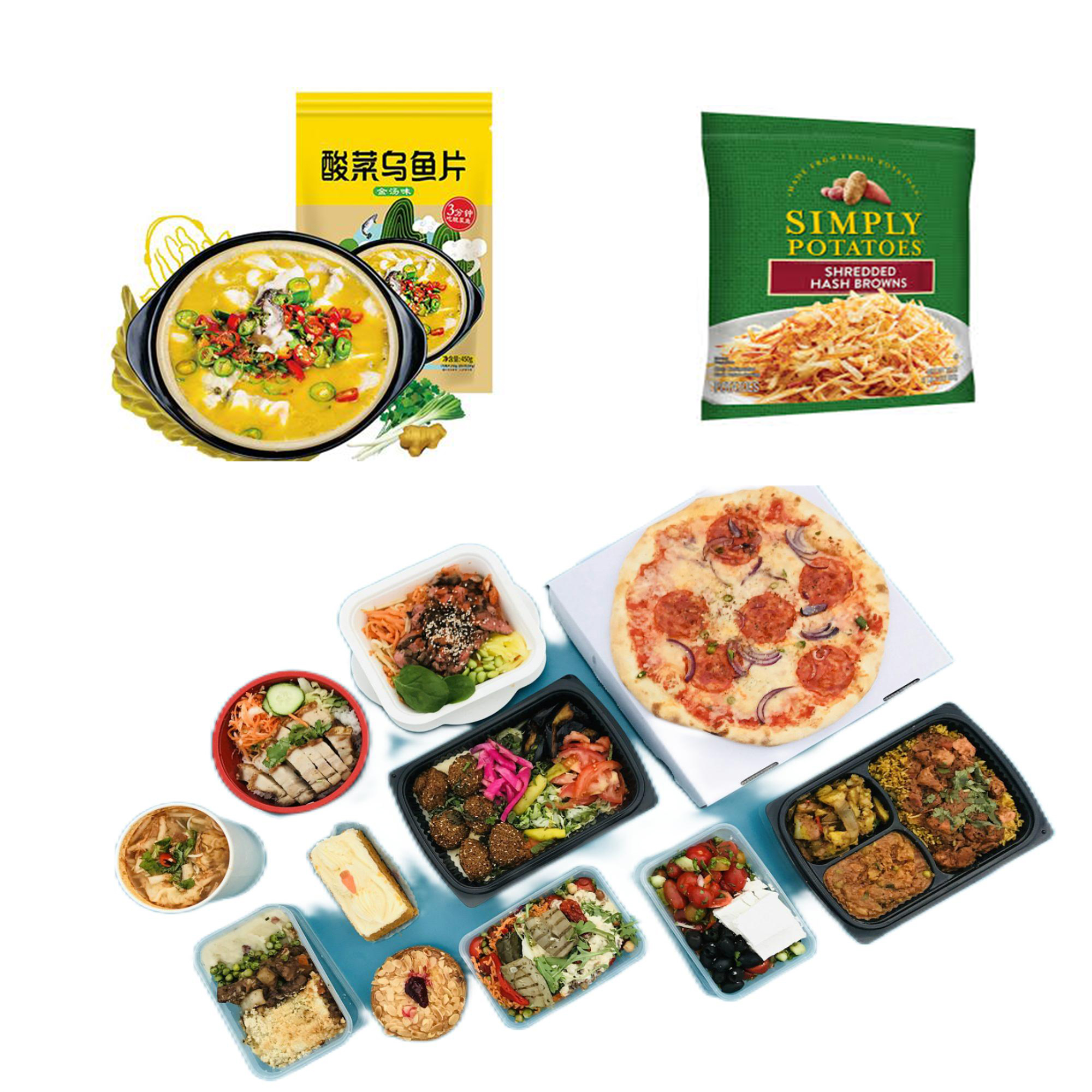
Importing from China has become a cornerstone of global trade, offering an expansive market for a diverse array of products. This comprehensive guide aims to demystify the process, providing a step-by-step approach to tapping into the Chinese market. Let’s explore the compelling reasons to consider China as your source for imports.
The Advantages of Importing from China
Cost-Effective Goods
Products sourced from China are often significantly more affordable than those from other regions, allowing for substantial resale profits. This price advantage enables businesses to achieve a markup of tenfold or more.
Availability of Distinctive Products
China is renowned for its innovative suppliers who consistently deliver exceptional and novel products. This creativity results in a variety of goods that are difficult to find elsewhere, offering a competitive edge in the marketplace.
Exceptional Profit Margins
The disparity between purchase and resale prices can lead to profits ranging from 100% to an astounding 1000%. This large margin provides the flexibility to set prices that align with your desired profit targets.
High-Quality Offerings
Contrary to prevalent myths, Chinese products encompass a broad quality spectrum. Like any market, it presents both superior and inferior goods. Success lies in identifying and procuring items that meet your quality criteria and budget.
Accelerated Business Growth
Entering the import sector or expanding your current operations to include Chinese products can significantly enhance your business growth. The lucrative benefits associated with this market are worth considering for those looking to broaden their commercial horizons.
Why Consider Importing from China?
Several compelling reasons make China an attractive source for imports:
- Cost-effective Goods: Products sourced from China often come at significantly lower prices compared to their counterparts elsewhere, enabling resellers to achieve substantial profit margins.
- Diverse and Innovative Products: Chinese suppliers are known for their creativity, offering a range of products that stand out in the global market.
- Exceptional Profit Margins: The substantial difference between purchase and resale price in China allows for impressive profits, with resellers having the flexibility to set their pricing strategy.
- Assured Quality: Contrary to prevalent myths, China is home to products that meet a spectrum of quality standards. The key lies in discerning high-quality goods that align with your expectations and budget.
- Accelerated Business Growth: Diversifying your import portfolio to include Chinese products can significantly speed up your business’s expansion, leveraging the attractive benefits of trading with China.

Optimal Products for Import from China
Given China’s vast production capabilities, identifying profitable products is crucial. Here’s a curated list reflecting both timeless and trending choices:
Timeless Imports:
- Elektronica: Always in demand, with advancements bringing new gadgets into the market.
- Clothing: A staple of trade, offering everything from high fashion to everyday wear.
- Plastics and Related Goods: Essential for a myriad of applications, from packaging to manufacturing.
- Pharmaceuticals: With an increasing focus on health, these products are vital.
- Vehicles: The automotive industry benefits greatly from Chinese manufacturing efficiency.
Budget-friendly Finds:
- Wireless Phone Chargers: An essential in today’s tech-driven society.
- Electric Pest Repellers and Toys: Affordable and widely used in households.
- Kitchen Gadgets and Pet Supplies: Everyday items that offer convenience and novelty.
- Tech Accessories: Including portable lamps and computer peripherals, catering to the digital age.
Trending Now:
- Massage Guns: Gaining popularity for home wellness.
- Electric Soldering and DIY Tools: Reflecting the growing interest in home improvement and hobbies.
- Eco-friendly Products: Such as waterproof shoe covers, reflect a shift towards sustainability.
- Home Office Enhancements: Laptop stands and ergonomic accessories for remote work setups.
- Entertainment and Leisure Items: Like PVC inflatable beer pong tables, showcasing leisure trends.
Profitable products to import from China
When looking for the most profitable products to import from China, you can consider any of those listed under the cheap products category. These products allow you the opportunity to set a selling price of your choice, which could be as high as 1000% of the retail price.
In addition to that list, you can consider the following:
- Men’s smart sports watch
- Video doorbells
- Smart speakers
- Mini tyre inflator
- Statement necklaces
- Men’s grooming kit
- Derma roller system
- Motion sensor solar outdoor lights
- Cosmetic brush set
- Selfie ring light
- Water sports shoes
- Dead Sea mud mask
- 4K digital camera
- LED mirrors
- Wi-Fi repeater
- Air fryer
- Orthopedic pillows
- IP security cameras
List of items imported from China
Generally, here is a comprehensive list of items imported from China.
- Hardware import from China
- Import tools from china
- Machinery import from china
- Excavator import from china
- Motorcycles import from china
- Bikes import from china
- ATV import from china
- Car accessories import from china
- Steel imports from china
- Textile imports from china
- Yarn import from china
- Clothes import from china
- Import underwear from china
- Fabric imports from china
- Silk import from china
- Import carpet from china
- Import handbags from china
- Shoe import from china
- Import socks from china
- Electronic import from china
- Laptop imports from china
- Import TV from china
- Solar panels import from china
- Furniture imports from china
- Toys import from china
- Tire import from china
- Cement import from china
- Import granite from china
- Import tiles from china
- Paper import from china
- Import diapers from china
- Food import from china
- Import tea from china
- Garlic import from china
- Phones import from china
- Auto parts import from china
- Jewelry import from china
- Hair import from china
- Import watches from china
- Import silk flowers from china
- Fitness equipment import from china
- Medical supplies import from china
- Stationery import from china
- Kitchen cabinets import from china
- Lighting import from china
- PPE kit import from china
- Cigarette lighter import from china
Ensuring Compliance with Import Regulations from China
Embarking on imports from China opens up a vast array of products at competitive prices. However, it’s essential to recognize that not every item is eligible for import. Understanding the cultural and regulatory landscape of both China and your home country is critical to a smooth importation process. This guide aims to highlight key considerations and dispel common concerns about importing from China.
Prohibited Imports in China
Het is van cruciaal belang op te merken dat het verboden is om bepaalde artikelen in China te importeren, in overeenstemming met de regelgeving en culturele normen van het land. Op dezelfde manier kan uw land beperkingen hebben. Maak uzelf hiermee vertrouwd om complicaties tijdens de douane-inklaring te voorkomen.
Verboden artikelen omvatten, maar zijn niet beperkt tot:
- Tweedehands auto's en onderdelen
- Obscene publicaties
- Radioactief of giftig industrieel afval
- Antibiotica voor gebruik in de landbouw
- Verbruiksartikelen die schadelijk zijn voor de gezondheid
- Opruiend drukwerk
- Tweedehands elektronische opslagapparaten
- Versleten kleding
- Sloopvoertuigen
- Chemische meststoffen en pesticiden
- Zaden en jonge boompjes
- Voedselsupplementen
- Menselijke biologische materialen
- Besmettelijke stoffen
- Vals geld en waardepapieren
- Narcotica
- Dierlijke bijproducten
- Explosieven en wapens
Voor artikelen die niet in de lijst staan of als er enige onzekerheid bestaat over hun importstatus, wordt geadviseerd de Chinese General Administration of Customs of een deskundige agent te raadplegen.
Licentie voor import uit China
Het Chinese Ministerie van Handel deelt de import in drie groepen in:
- Toegestaan
- Beperkt
- Verboden
Hoewel verboden items ronduit verboden zijn, vereist het importeren van beperkte items het verkrijgen van specifieke licenties of quota's.
Toegestane goederen komen in aanmerking voor een automatische licentie, waardoor het exportproces vanuit China wordt vereenvoudigd. Deze vergunning is universeel toegankelijk en helpt bij het monitoren van importen, heeft een geldigheidsduur van zes maanden en geldt voor losse zendingen.
Beperkte goederen hebben een niet-automatische vergunning nodig, onderworpen aan tariefcontingenten, om de invoer ervan te reguleren.
Aanvraag voor een invoervergunning vereist het verstrekken van gedetailleerde informatie, waaronder:
- Bedrijfs- en contactgegevens
- Geadresseerde in China
- Licentiegegevens en vervaldatum
- Regelgevende stempels
- Handelsvoorwaarden
- Product specificaties
- Beoogd gebruik
- Prijs en volume
- Inklaringspoort
- Aanvullende productspecificaties
Veiligheid van geïmporteerde goederen uit China
Zorgen over de veiligheid van het importeren uit China zijn rigoureus aangepakt via uitgebreide inspectieprotocollen. De Chinese overheid geeft prioriteit aan de veiligheid van geëxporteerde goederen en zorgt ervoor dat deze geschikt zijn voor internationale handel.
Te midden van mondiale gezondheidscrises kunnen geruchten importeurs ervan weerhouden. Niettemin verzekeren gezaghebbende gezondheidsinstanties zoals de CDC dat goederen uit China geen gezondheidsrisico’s met zich meebrengen, inclusief virusoverdracht. Het overlevingspercentage van ziekteverwekkers op oppervlakken gedurende de transportperiode is aanzienlijk laag, wat de mythe van de risico's die aan geïmporteerde goederen verbonden zijn, ontkracht.
Concluderend: hoewel importeren uit China een kans biedt voor aanzienlijke bedrijfsgroei en toegang tot diverse producten, is het absoluut noodzakelijk om zorgvuldig door het regelgevingsklimaat te navigeren. Ervoor zorgen dat goederen zijn toegestaan, het begrijpen van vergunningsvereisten en het wegnemen van ongegronde veiligheidsproblemen zijn stappen op weg naar succesvolle en veilige importpraktijken.

Strategieën voor productsourcing:
1. Gebruik maken van zoekmachines
Het Chinese digitale ecosysteem biedt unieke platforms die verschillen van de mondiale normen, waarbij Baidu de belangrijkste zoekmachine is. Net zoals je Google zou kunnen gebruiken, maakt Baidu uitgebreide zoekopdrachten mogelijk met behulp van specifieke trefwoorden om producten te vinden. Andere belangrijke zoekmachines zijn Sogou, Shenma, 360 Search en WeChat Search, die elk toegang bieden tot een breed scala aan productvermeldingen.
2. Het bijwonen van beurzen
Beurzen bieden bedrijven een dynamische omgeving om een breed scala aan producten te ontdekken en rechtstreeks met leveranciers in contact te komen. Opmerkelijke gebeurtenissen zijn onder meer:
- China import- en exportbeurs (Canton Fair)
- Oost-Chinese beurs
- China Yiwu Internationale Grondstoffenbeurs
Deze bijeenkomsten zijn van cruciaal belang voor productevaluatie uit de eerste hand en voor het leggen van direct contact met fabrikanten.
3. Online marktplaatsen verkennen
De Chinese online marktplaatsen bruisen van activiteit en herbergen talloze leveranciers en fabrikanten. Dit competitieve landschap zorgt voor een brede selectie van producten naast mogelijke kortingen. De belangrijkste marktplaatsen om te overwegen zijn:
4. Duik in groothandelsmarkten
Voor degenen die op zoek zijn naar groothandelsmogelijkheden beschikt China over verschillende gespecialiseerde marktplaatsen in verschillende provincies, zoals:
- Huaqiang Bei elektronische wereld, Guangdong
- Shuibei Internationaal Sieradenuitwisselingscentrum, Guangdong
- Guangzhou Baima-kledingmarkt, Guangdong
- GuihuaGang lederen tassenmarkt, Guangdong
- Hangzhou groenblijvende kleding Groothandelsmarkt, Zhejiang
- Yiwu Internationale Handelsstad, Zhejiang
- Haining China Leather City, Zhejiang
- Huqiu Bruidsstad, Jiangsu
Het bezoeken van deze marktplaatsen kan niet alleen uw productinkoopopties verbreden, maar ook een verrijkende ervaring bieden bij het verkennen van het Chinese handelslandschap.
5. Samenwerken met een importagent
Het inschakelen van een importagent kan het inkoopproces vereenvoudigen, waarbij gebruik wordt gemaakt van hun diepgaande kennis van de Chinese markten. Of u nu kiest voor een inkoopbedrijf of individuele agenten, deze aanpak kan de productselectie en logistieke regelingen stroomlijnen. Om een productief partnerschap te garanderen, is het essentieel om zorgvuldig onderzoek te doen, rekening houdend met recensies en getuigenissen.
Kiezen voor een sourcingstrategie
De keuze tussen een inkoopbedrijf en individuele agenten hangt af van persoonlijke voorkeur en specifieke zakelijke behoeften. Een sourcingbedrijf kan een uitgebreider dienstenpakket aanbieden, terwijl individuele agenten persoonlijke aandacht en expertise in bepaalde niches kunnen bieden.
Ongeacht de gekozen methode blijft het doel duidelijk: het effectief en efficiënt inkopen van producten op de enorme en gevarieerde markt van China. Door zorgvuldig door deze opties te navigeren, kunnen bedrijven nieuwe wegen voor groei en expansie ontsluiten, waarbij ze profiteren van de kwaliteit, innovatie en waarde die Chinese producten te bieden hebben.
Importeren uit China en procedure
Als lokale expediteur weten wij wat er nodig is om goederen uit China te importeren. Bekijk dit gidsgedeelte voor meer informatie.
1. Ken uw importrechten
Als u in ons land koopt, wordt u importeur. Of het eindproduct bij u thuis wordt afgeleverd, hangt af van uw import en de maat van het product. Kleine importproducten die bedoeld zijn voor persoonlijk gebruik of waarvan de waarde redelijk klein is, worden doorgaans bij u thuis afgeleverd, waardoor u veel geld en tijd bespaart. Als het om commerciële producten gaat, bevestig dan eerst dat u het recht heeft om deze producten te importeren.
2. Zoek goede producten die je uit China wilt importeren
U moet weten welk soort producten u wilt importeren en of deze al dan niet worden geclassificeerd als toegestane, beperkte of verboden artikelen. Als u van plan bent geld te verdienen met de verkoop van deze producten, moet u producten met een hoog rendement selecteren. Blader door de hierboven gedeelde lijst om objectief te beslissen. Zelfs als u naar functies kijkt, vergeet dan niet dat het uiteindelijk om iets gaat dat kan verkopen.
3. Kies toegestane goederen
De Chinese producten worden ingedeeld in drie hoofdcategorieën, namelijk: toegestaan, beperkt en verboden.
U zult geen problemen ondervinden bij het inkopen van toegestane goederen. Hetzelfde kan echter niet worden gezegd bij het inkopen van beperkte en verboden producten. U bent verplicht te bevestigen dat de ingekochte goederen voldoen aan de bestaande overheidsvoorschriften.
4. Categoriseer de goederen en bepaal de verzendkosten
Elk van de goederensoorten die u importeert, kan binnen verschillende tariefgroepen vallen. U moet de juiste classificatie kennen, omdat deze van invloed is op het tarief dat bij invoer wordt betaald. Zorg ervoor dat u de totale verzendkosten opgeeft voordat u uw bestelling plaatst.
5. Koop bij een betrouwbare en ervaren leverancier in China en plaats een bestelling
Gebruik de hierboven gedeelde strategieën om de meest betrouwbare leverancier te vinden. Zorg ervoor dat u de verzendvoorwaarden, de waarde per artikel, de artikelbeschrijving en het geharmoniseerde systeemnummer begrijpt.
6. Handels- en verzendvoorwaarden
Incoterms, ook wel verzendvoorwaarden en handelaarsvoorwaarden genoemd, verwijzen naar de internationale verkoopovereenkomsten. EXW en FOB zijn de meest voorkomende handels- en verzendvoorwaarden. Bekijk ze zoals hieronder uitgelegd.
EXW – De leverancier geeft u toegang tot het artikel, maar neemt geen verantwoordelijkheid voor het product zodra het de fabrieksdeuren verlaat.
FOB-verzending betekenis – De verkoper verzendt de goederen naar de dichtstbijzijnde haven, maar laat u vanaf dat moment alles regelen.
CFR-verzending – De verkoper verzendt de goederen naar de importhaven. De koper neemt alle risico's nadat de goederen op het exportschip in het schip zijn geladen.
CIF-verzending – Werkt op dezelfde manier als CFR, behalve dat de verkoper verantwoordelijk is voor alle risico's totdat de goederen de bestemmingshaven bereiken.
7. Uw producten gemakkelijk, goedkoop en snel naar China verzenden
U heeft duidelijkheid nodig over hoe uw bestelling naar u wordt verzonden. Wij hebben verschillende verzendopties waaruit u kunt kiezen. De beslissing om een van deze opties te gebruiken moet worden bepaald door hoe snel u de producten wilt hebben, de kostenfactoren en de duurzaamheid.
Zeevracht – Dit is de goedkoopste verzendoptie die we aanbieden en omvat het vervoeren van enorme goederen via transportschepen. Wees echter voorbereid op mogelijke vertragingen.
Luchtvracht – Wij gebruiken deze methode wanneer u uw goederen via een luchtvaartmaatschappij wilt laten vervoeren. De optie levert uw zending overal af waar vliegtuigen kunnen vliegen.
Spoorgoederenvervoer - De methode omvat het gebruik van treinen en spoorwegen bij het vervoer van vracht over land. Door de hoge capaciteit van treinen is er meer ruimte voor grote spullen.
Expressvracht – Gebruik deze optie als u de artikelen op zo kort mogelijke termijn naar u wilt vervoeren. De goederen worden rechtstreeks van het kantoor van de leverancier naar de bestemming gebracht.
LCL of FCL – LCL betekent minder dan een containerlading. Dat houdt in dat uw lading naast andere zendingen wordt vervoerd. Aan de andere kant verwijst FCL naar volledige containerlading. Bij een FCL wordt alleen uw zending in de container meegenomen.
8. Houd de lading in de gaten en bereid u voor op de aankomst ervan
Internationale verzending kan meer tijd in beslag nemen dan verwacht, waardoor sommige mensen een beetje nerveus worden. U moet weten welke mechanismen zijn ingevoerd om de voortgang ervan te volgen. Normaal gesproken zal de bestemmingsagent die u op de B/L vermeldt, u hiervan op de hoogte stellen nadat de producten in de haven zijn afgeleverd. Tijdens het leveringsproces worden ook verschillende documenten ingevuld. Zorg ervoor dat u bij ons alles bevestigt wat u kunt verwachten.
9. Ontvang de zending
Zodra we de goederen op de genoemde bestemming hebben afgeleverd, moet u ervoor zorgen dat u vooraf afspraken heeft gemaakt over de inklaring bij de douane. Voor degenen die voor deur-tot-deurbezorging hebben gekozen: u kunt gewoon thuis wachten, wij zorgen voor de rest totdat u ze krijgt. Controleer bij ontvangst van de producten de etiketten en de verpakking om er zeker van te zijn dat er niet mee is geknoeid.
Risico’s en problemen bij het importeren uit China
Dat we besloten hebben om uit ons land te importeren, betekent niet dat alles zomaar soepel verloopt. In plaats daarvan zijn er enkele risico's en uitdagingen aan verbonden. Als u op de hoogte bent van deze risico's, krijgt u een voorsprong en het vermogen om deze te overwinnen.
1. Taalbarrière
Het grootste percentage inwoners van China, inclusief leveranciers en fabrikanten, spreekt Chinees. Als je de taal niet verstaat, zul je het moeilijk krijgen. De taalbarrière maakt het moeilijk om uw behoeften en de bron voor de gewenste producten te communiceren. Dat maakt het noodzakelijk om de hulp in te schakelen van een vertrouwde agent die ons land redelijk goed begrijpt.
2. Kwaliteitsprobleem
Het kwaliteitsprobleem is er één waarvan wij denken dat het de groei van onze internationale handelsactiviteiten zo snel mogelijk heeft afgeremd. Voortdurende kwaliteitsproblemen bij sommige ondermaatse leveranciers verminderen het vertrouwen van de koper. Door goed onderzoek te doen, kunt u echter krijgen wat u zoekt en hoeft u zich geen zorgen te maken over de kwaliteitsuitdaging.
3. Hoge prijs en kosten
Niet alle producten in China zijn goedkoop verkrijgbaar. En zelfs in gevallen waar de prijs lager is dan op de meeste andere plaatsen, is er ook de uitdaging van douanerechten. Dat kan hoog of laag zijn, afhankelijk van de handelsovereenkomsten van uw land met het onze. Te hoge douanerechten kunnen een aanzienlijke impact hebben op de kosten van de verzonden producten, en dus op uw winstmarge.
4. Tijdrovend
Soms kunt u te maken krijgen met vertragingen, die voornamelijk verband houden met het feit dat het veel tijd kost om de producten te vinden voordat ze naar u worden verzonden. Als u niet weet hoe u hier artikelen moet kopen, kunt u veel tijd verspillen. Dat verklaart de noodzaak om in de meeste gevallen een agent te gebruiken. Het is ook van het grootste belang dat u samenwerkt met een vertrouwde rederij die de urgentie van uw producten begrijpt. Als u ze sneller nodig heeft, kunt u verzendopties zoals expresvracht en luchtvracht overwegen.
Levertijd importeren uit China
Naast de tijd die u besteedt aan het zoeken naar producten, moet u ook overwegen hoe lang het duurt voordat u de verzonden producten ontvangt. Bij import uit China is de verzendtijd afhankelijk van de gekozen transportmethode, dat wil zeggen luchtvracht, zeevracht of spoorvracht.
Houd er bij het gebruik van zeevracht rekening mee dat de oceaan vrij langzaam is en meer planningstijd nodig heeft. De beste aanpak is om drie maanden van tevoren te beginnen met de voorbereiding van deze zending. Degenen die voor spoorvervoer kiezen, krijgen hun producten misschien iets sneller dan zeevracht, maar nog steeds langzamer dan luchtvracht. Luchtvracht en expresvracht zijn het snelst.

Wat zijn importbelastingen uit China?
Als u importeert vanuit China, moet u rekening houden met de volgende invoerbelastingen, afhankelijk van de aard van uw zending.
1. Invoerrechten uit China
U moet op de hoogte zijn van de meestbegunstigingsheffingen als u importeert uit ons land. Als uw land deel uitmaakt van de meestbegunstigingstarieven, kan het algemene tarief 0%, 8% zijn, of zelfs 270%. Als uw land geen deel uitmaakt van de genoemde overeenkomsten, zijn de voorkeurstarieven van kracht en kunnen variëren van 0%, 1% tot 121.6%.
2. Douanerechten bij invoer
Douanerechten kunnen worden berekend op basis van hoeveelheden of op basis van ad valorem. Welke invoerrechten van toepassing zijn, is afhankelijk van de goederen in kwestie. Zorg ervoor dat u dit duidelijk maakt met uw agent.
3. Importeer belasting over de toegevoegde waarde
Op elke zakelijke transactie in het land wordt een belasting over de toegevoegde waarde geheven. Bij het importeren is ook BTW van toepassing, variërend van de standaard 16% BTW tot een lager tarief van 10% en een speciaal BTW van 6%.
4. Verbruiksbelasting
Wanneer u belastbare goederen uit China importeert, moet u de relevante verbruiksbelasting betalen die op het product wordt geheven.
Betaal ik importbelasting uit China?
Ja, als u importeert uit China, betaalt u verschillende belastingen, afhankelijk van het soort goederen dat wordt geïmporteerd en de handelsovereenkomsten tussen onze regering en de uwe.
Hoe importbelasting uit China te vermijden
Terwijl u op zoek bent naar manieren om invoerbelastingen in China te vermijden, kunt u het zich niet veroorloven de fout te maken dat u uw goederen te weinig aangeeft of snel en losjes met de documentatie speelt. Alles moet op legale wijze worden gedaan om ongerechtvaardigde boetes en de mogelijkheid om uw producten te verliezen te voorkomen.
Controleer bij de douane of er speciale overeenkomsten zijn tussen China en uw land om te zien of dit u kan helpen bij het importeren zonder invoerbelasting. Laat u koste wat het kost niet verleiden tot het verstrekken van valse informatie als een manier om importbelasting te vermijden.
U kunt ook overwegen om een douanekrediet aan te vragen, zodat u later na ontvangst van de producten de belastingen kunt betalen.
Hoe importbelasting te betalen
U kunt een van de volgende opties gebruiken om invoerbelasting te betalen:
- Het betalen van de invoerbelasting aan de expediteur zoals gefactureerd door de rederij
- Douanekrediet aanvragen, waardoor u de belastingen op een later tijdstip kunt betalen
- Laat de leveringsbelasting betalen bij uw leverancier
Documenten die nodig zijn voor import uit China
Bij het importeren uit China heeft u de volgende belangrijke documenten nodig:
- Commerciele factuur
- Paklijst
- Certificaat van herkomst
- Cognossement
- Invoervergunning
Hoe kleine hoeveelheden uit China Alibaba te importeren
Kopers van kleine hoeveelheden worden geclassificeerd als kopers van minder dan $2.000. U kunt kleine hoeveelheden importeren uit China Alibaba. Alibaba, als het grootste e-commerceplatform in China, wordt overspoeld met allerlei soorten leveranciers. Gebruik de site om in contact te komen met leveranciers om miljoenen producten te verkrijgen.
Nadat u uw interesseproduct heeft geïdentificeerd, zoekt u ernaar op het platform en kiest u de leverancier van uw voorkeur. U heeft geen Alibaba-account nodig als u de producten in eerste instantie zoekt, maar wel als u contact opneemt met de leverancier. Zorg er dus voor dat u uw Alibaba-account aanmaakt.
Wanneer u een bestelling bij de leverancier plaatst, moet u verschillende elementen van de zending plannen, waaronder:
- Prijs per stuk
- Bestelde hoeveelheid
- Hoe snel wil je ze geleverd hebben
- Gekozen verzendmethode
- Bezorgadres
Wat te importeren uit China om te verkopen op eBay en AliExpress
Je hebt een breed scala aan producten die je kunt kopen op eBay en AliExpress. Raadpleeg de lijst met producten hierboven in deze handleiding. Het heeft een uitgebreide lijst met waarnaar u kunt zoeken op de twee platforms.
Volg de volgende eenvoudige stappen om in China te kopen en op Amazon te verkopen:
- Begin met het lokaliseren van de leverancier van uw producten in China
- Plaats een bestelling voor de producten
- Kies de gewenste verzendoptie van China naar uw land
- Regel al het douanepapierwerk, afhankelijk van de overeenkomst die u had met de expediteur
- Zodra u de goederen heeft, moet u zich aanmelden en de goederen afleveren bij het Amazon-magazijn. Vervolgens worden ze naar de online marktplaats geladen, waar miljoenen klanten over de hele wereld toegang tot ze hebben.
Conclusie
We hebben u door een gedetailleerde gids over verzending vanuit China geleid. Aangezien we lokaal zijn en dit landschap beter begrijpen, moedigen we u aan dat ook te doen Neem contact met ons op. Wij zijn de nummer één inkoopagent in China en een expediteur. Neem vandaag nog gerust contact met ons op voor professionele hulp bij het verzenden van uw waardevolle producten naar de gewenste bestemming.








